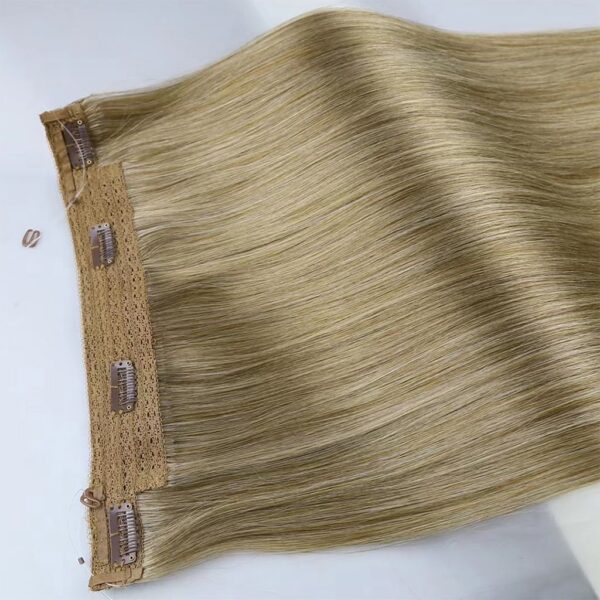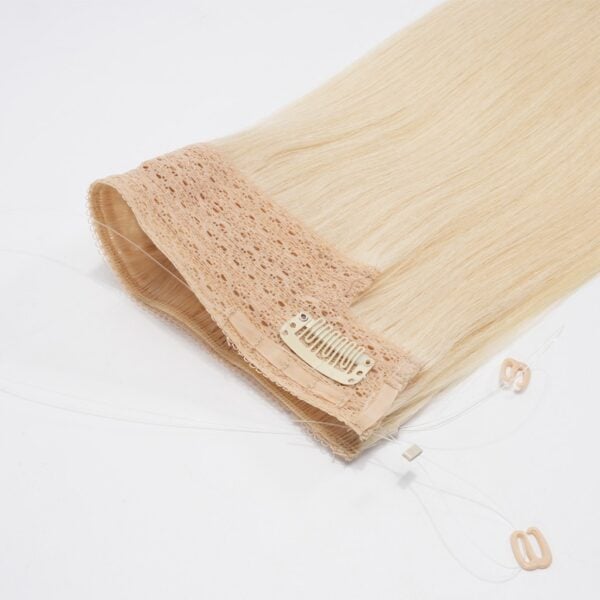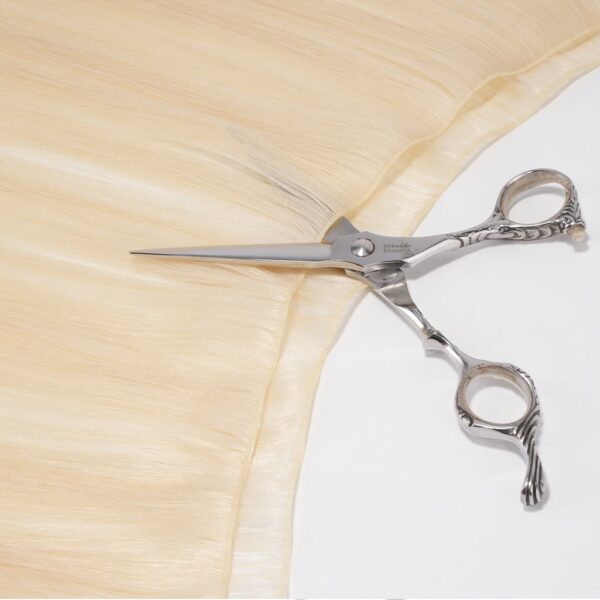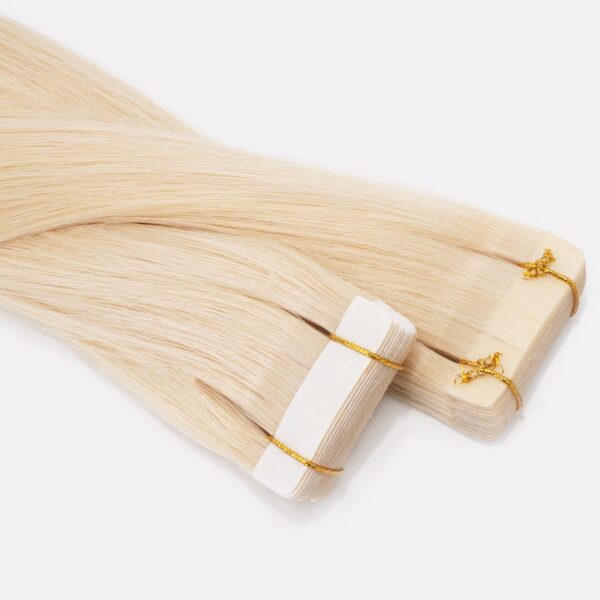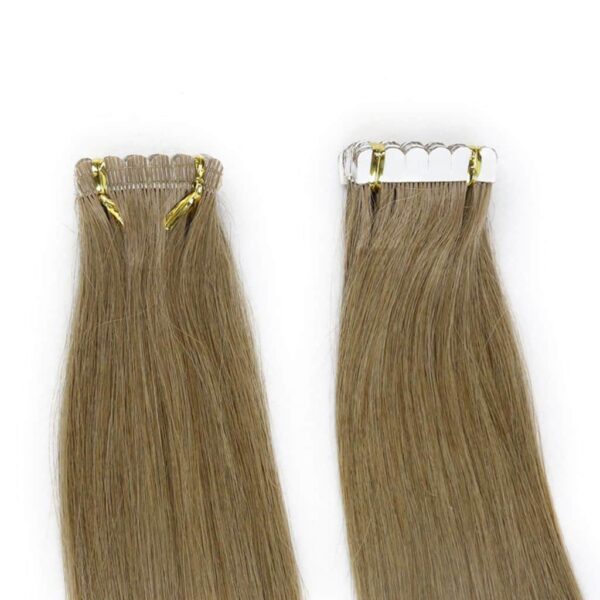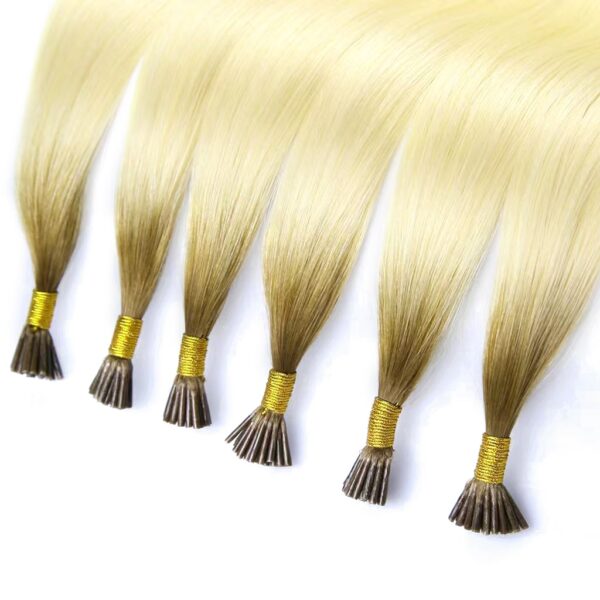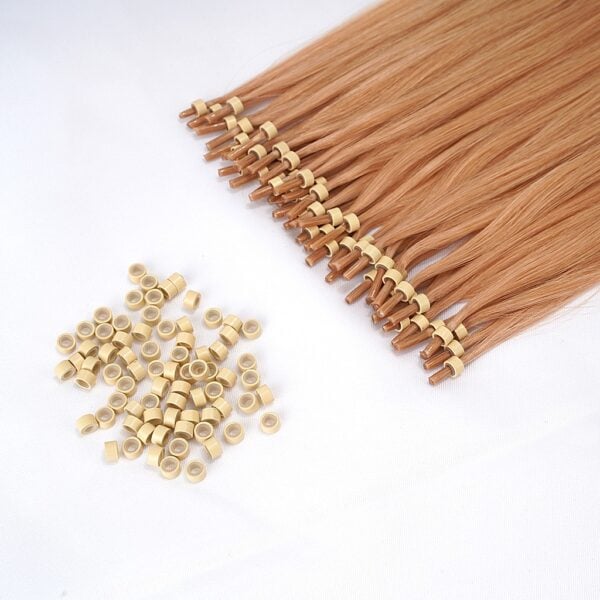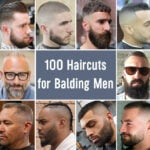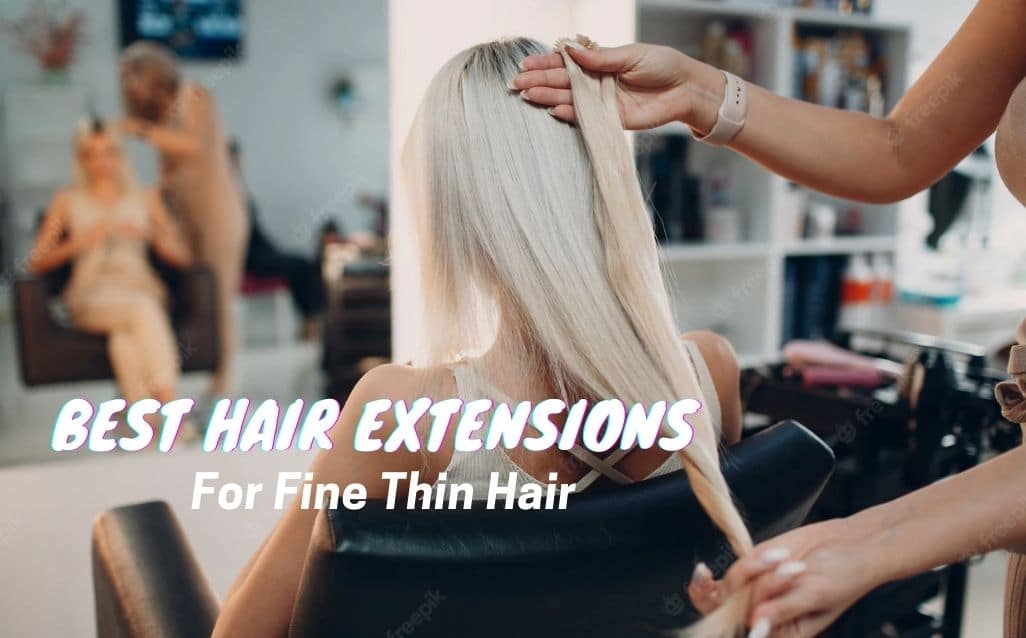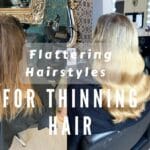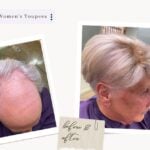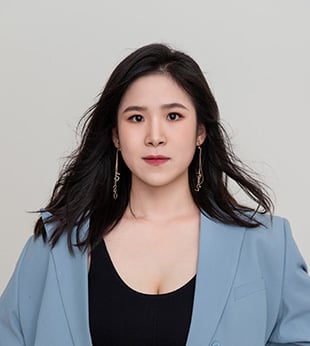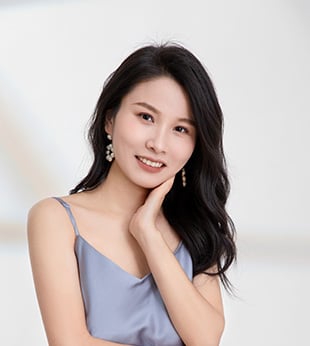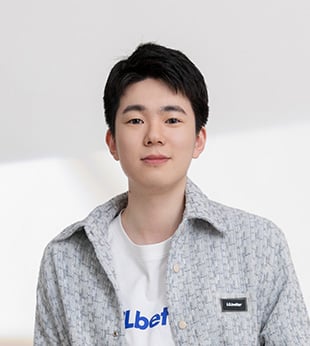You have probably seen complaints on the internet about how hair extensions, such as NBR, 6D2, tape-in, K-tip, and keratin capsule hair extensions, ruined their hair and how it takes heaps of time and work to restore their hair to the way it was before the extensions.
Yes, the hair extension method is not entirely risk-free and does call for basic safety and care tips as well as some fundamental safety and maintenance guidelines.
However, it is not even close to the horror tales that float around the Internet. Let’s go into more detail about all the contentious issues surrounding hair extensions:
Avoid Damaging Thin/Fine/Damaged Hair
Many female customers may have thin, fine, or damaged hair. Though these three terms are slightly different in definition, we treat them pretty much the same: we simply look after them, ensuring they are intact and not damaged further.
Thin hair is about hair density, meaning the person only has a thin layer of hair. She may have been going through excess hair loss. But she just doesn’t have much hair. Using hair extensions is to help her have more hair, not to have her lose more hair unnecessarily.
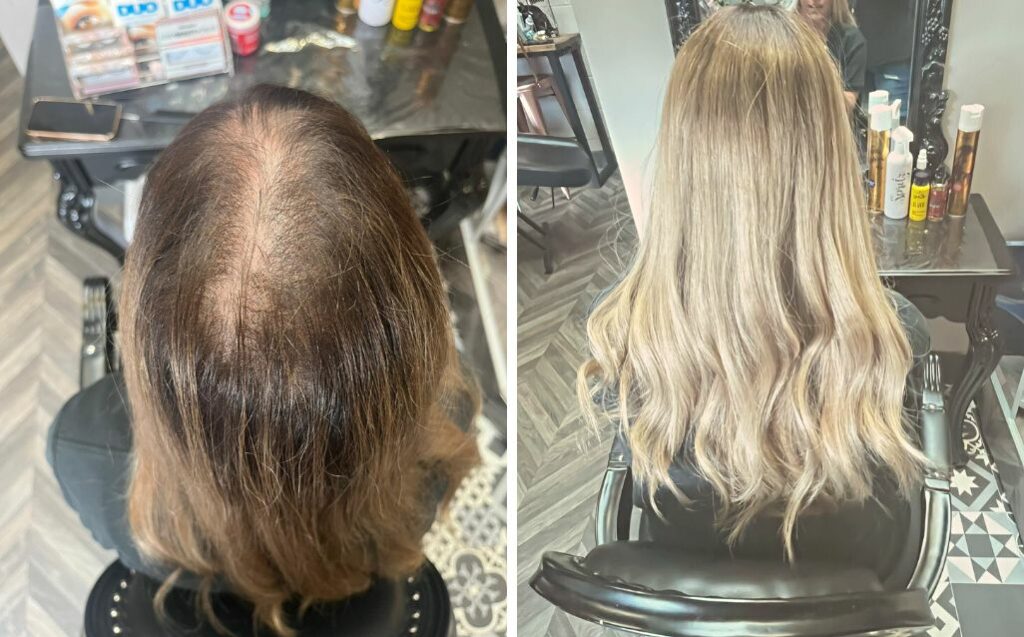
Fine hair is talking about hair shape. The person could have a full head of thick hair, but every single strand is thin and soft, prone to breakage. We also must treat it nicely and avoid breaking it when attaching hair extensions.
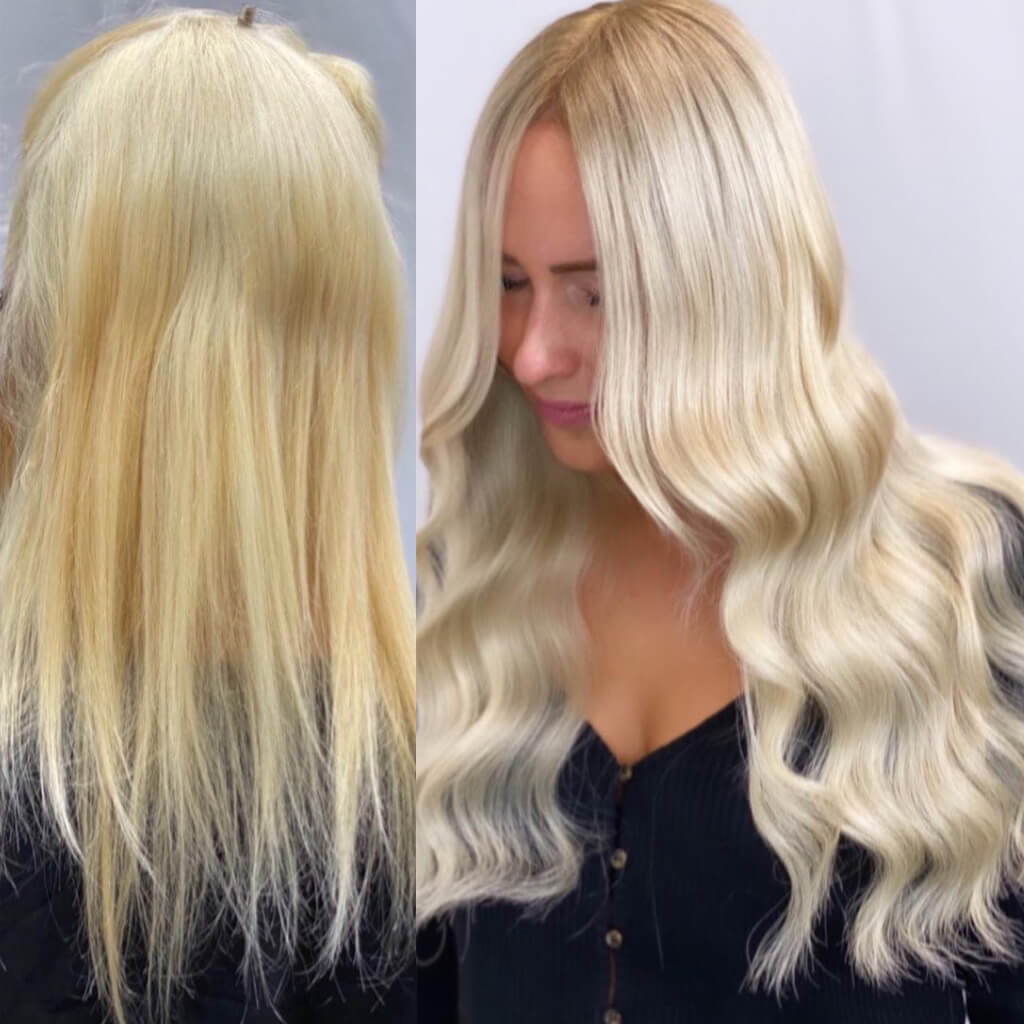
Damaged hair, as its name implies, means hair that’s already damaged, such as frayed, broken in half, etc., and we don’t want to further damage it.
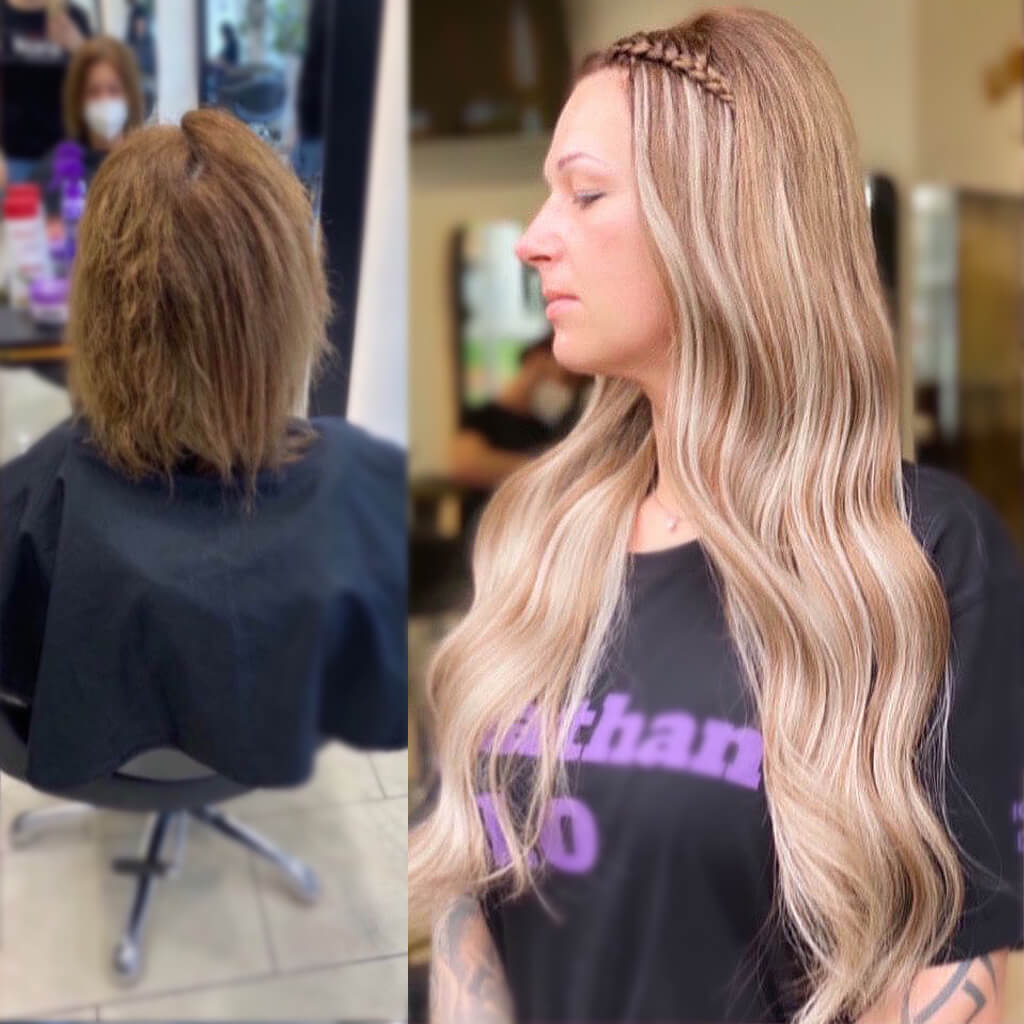
How Do Extensions Damage Our Natural Hair?
Let’s start with the most common misunderstanding. Are hair extensions safe for your hair? It is a topic we get asked so frequently that if we had a pound for every time, we would be as wealthy as Kylie Jenner.
The correct answer is that hair extensions won’t hurt your hair as long as they are put on correctly (always get a professional stylist to do it) and cared for.
- Correct Hair Extensions Serve the Correct Purpose
As we attach extensions to a person’s hair, some require heat, some require glue or other types of chemicals, which could be harmful to the wearer’s natural hair, and some may be heavy, such as wefts, generate weight, pulling against the natural hair and causing damage.
So for wearers who have thin, fine, or already damaged hair, choosing the right hair extension is crucial for the hair’s health.
Generally speaking, watch out for harmful chemicals; do something to prevent hair from being damaged by heat; avoid heavy weight or ill clips so that the natural hair doesn’t get pulled, causing breakage or splits.
- A Qualified Stylist Is a Must
When thinking about hair extensions, it’s also crucial to make sure you only schedule an appointment with a qualified stylist who will expertly attach your new, lush locks.
There is a new idiom for hair extensions.
If a qualified stylist can make your hair extensions last for 300 days, and if done by your husband or boyfriend, they will last for 3 weeks and 3 days with your dad’s help.
It may sound a little exaggerated. But the purpose is to keep our focus on how important it is to use hair extensions professionally. Like D62 hair extension twisters and natural beaded rows (NBR) hair extensions, they need to be put on by a professional, no other alternative.
Talking about NBR extensions pros and cons, the nitrile rubber is more resistant to oils and acids, compared to natural rubber, and has superior strength. But it is less flexible. Without the help of a professional stylist, the NBR beads will easily fall off.
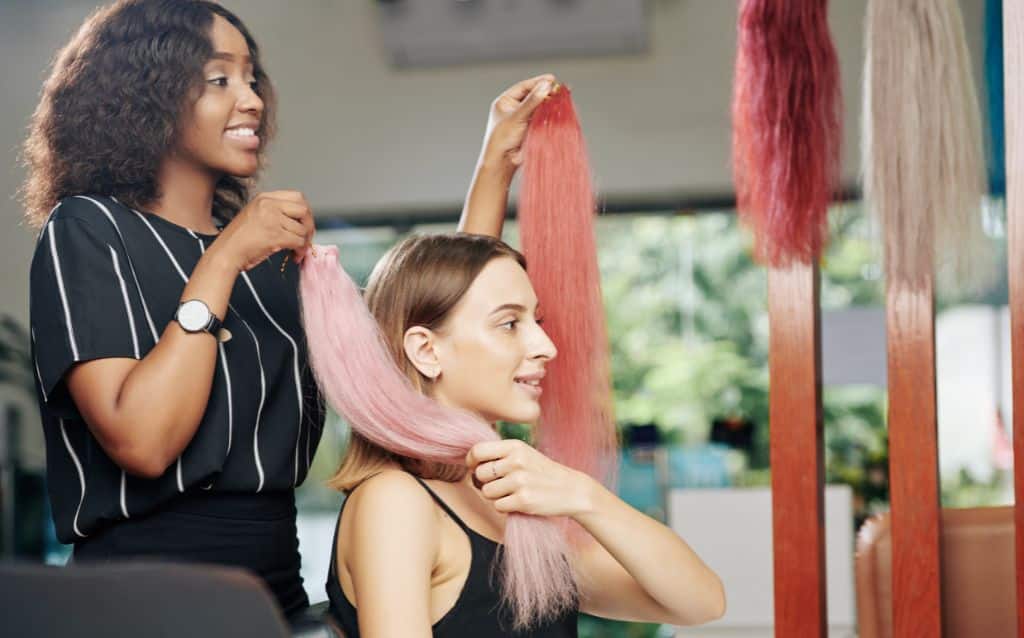
How to Choose Hair Extensions?
As mentioned above, thin, fine, or damaged hair is delicate and fragile. We are supposed to get hair extensions that cause the most minor damage to these hair types.
The primary guideline for protecting thin, fine, or damaged hair is to avoid heat (if heat is a must, use heat protectants), harmful chemicals, nasty clips, and weight.
- Choosing Temporary Over Permanent
Temporary hair extensions are the ones the wearer can put on or take off as they will, such as clip-ins or halo hair extensions.
Permanent hair extensions don’t mean that they will last forever. They simply refer to the fact that they are not easy to put on and take off. They must get a professional hairdresser to attach or unattach them for the wearer. The wearer won’t be able to do that alone and whenever they want.
Overall, when it comes to protecting the hair, temporary hair extensions are better than permanent ones.
- Most wearers of temporary hair extensions only have to wear them on special occasions. They don’t have to wear them to sleep, saving the natural hair from tossing and turning on the bed.
- Temporary extensions can be attached and taken off almost any time, anywhere they want. Give the natural hair time and space to breathe and regrow.
- Heat and glue are mainly for permanent hair extensions, such as fusion, nano rings, etc. If improperly used, the heat, tape, or adhesive may ruin your or my hair.
That said, temporary hair extensions are preferred to permanent ones as a guideline.
- Choosing Thin Over Thick
This point may be easy to understand. Thinner units are lighter than thicker ones.
Even temporary hair extensions, like halo and clips-ins, get attached to the wearer’s hair as one whole piece.
Thicker hair extensions mean they are heavy. When attached, more weight will be put on the wearer’s hair, whereas thinner ones are lighter and thus have less weight.
If the wearer is keen on having a voluminous hair look, you can help her sew and attach the thin clip-ins in these different sections to create layers. So, each layer of hair is still light, but the overlapping layers will quickly create a thick, voluminous look.
- Choosing Strand-by-Strand Over Wefts
This is only a guideline and doesn’t necessarily mean it is always the case. The basic idea is that hair wefts are heavier than hair extensions that are attached strand by strand, so they tend to pull harder against the natural hair.
But many qualified stylists state that strand-by-strand extensions and hair wefts are the least damaging hair extensions on the planet if they are put in the right way.
The bottom line is: it has to be sewn by a professional stylist. Braiding the hair for the hair wefts to be put on requires high-level expertise, and only qualified stylists can do it.
- Choosing Micro Bonds Over Large Bonds
We mainly point to fusion or cold fusion hair extensions when discussing bonds. Fusion hair extensions are primarily strand-by-strand extensions installed by professional stylists like you. And because they are attached to the hair strand-by-strand, the weight of each individual bond matters.
The nano-ring, micro-bead, and micro-link (or micro-loop) hair extensions are super light. They don’t require heat when being attached. A thin strand of hair gets threaded through the tiny ring and clipped by tiny weightless beads to create a semi-permanent bond.
Overall, the smaller and lighter the bond, the less likely the hair extension will damage the hair.
Least-Damaging Hair Extensions for Consideration
With all the pros and cons of various hair extensions given above, we bring you a few more items for your consideration.
Halo Hair Extension
Halo hair extensions nearly cause no damage to the wearer’s hair.
They are made for temporary use and the wearer can put it on and take it off whenever she wants.
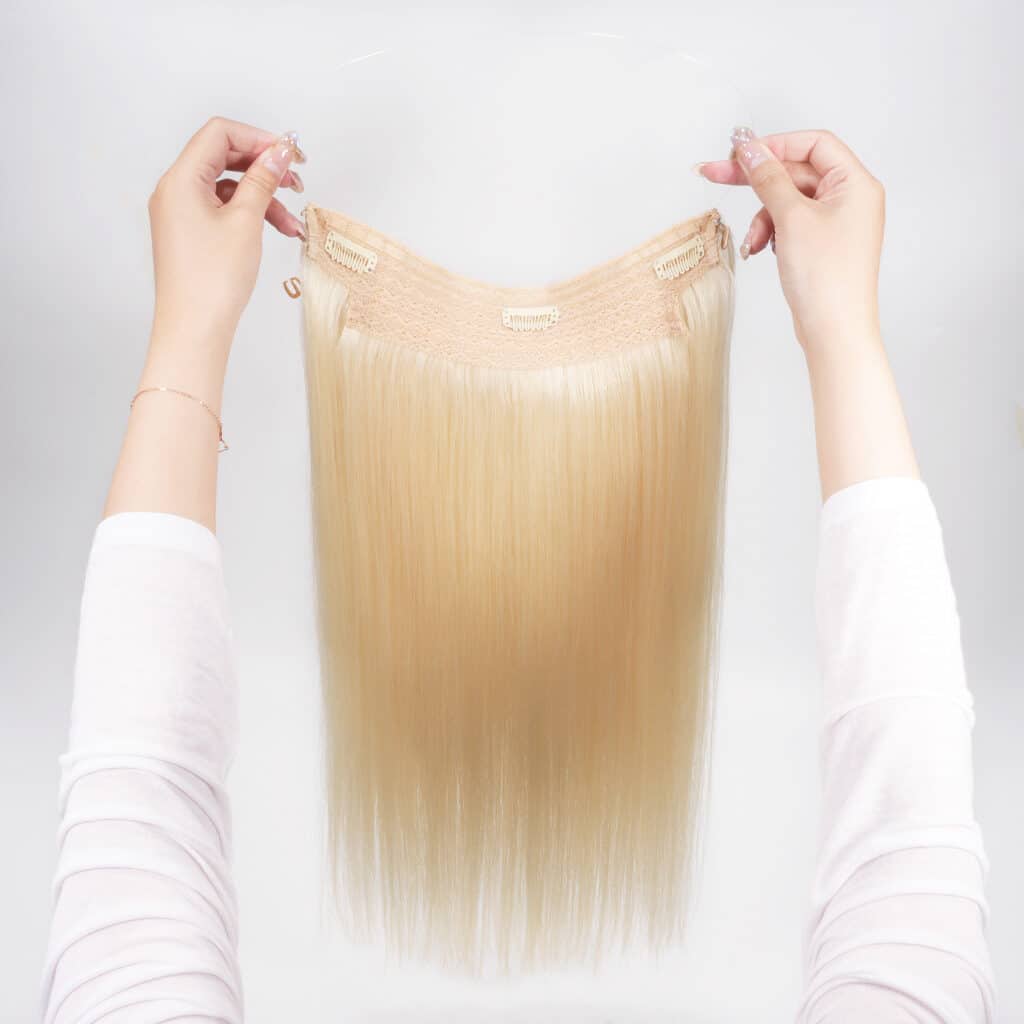
Different from other hair extensions, halo hair extensions sit on the hair like a crown with a clear nylon line rather than attach to the hair, causing no tug and pull against the wearers’ natural hair.
There’s no glue, tape, beads, or clips used, and it won’t cause any damage to the wearer’s hair physically or chemically.
It is thin and light, with a thin, clear wire through the weft to adjust its size.
Minor clips are added to keep it stable on the hair and also to spread its weight.
-
MIX HALO Hair Extensions in Remy Human Hair Wholesale M#2/6/613$93.00 – $219.00
-
Adjustable Remy Halo Hair Extensions Wholesale$69.00 – $237.00
Genius Weft Hair Extensions
The Genius Weft Hair Extension is one of the sew-in hair extensions.
If you are concerned about wefts being weighty, this super thin hair weft is pretty light and thin.
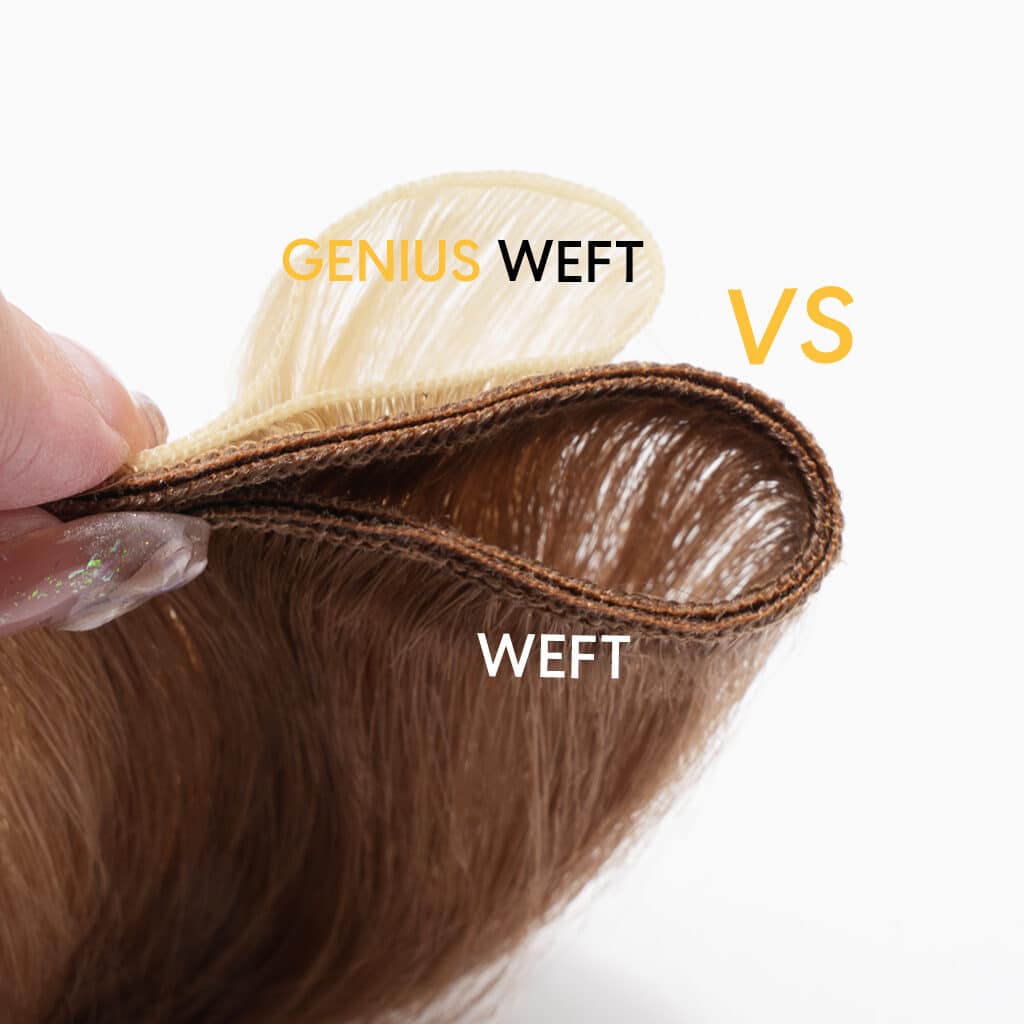
It can even be cut into smaller pieces without fraying and attached to the wearer’s head piece-by-piece. Or attached to different sections of the hair to form layers for great volume.
Tape-In Hair Extensions
Tape-in hair extensions are the most practical extensions walking the earth, the top seller.
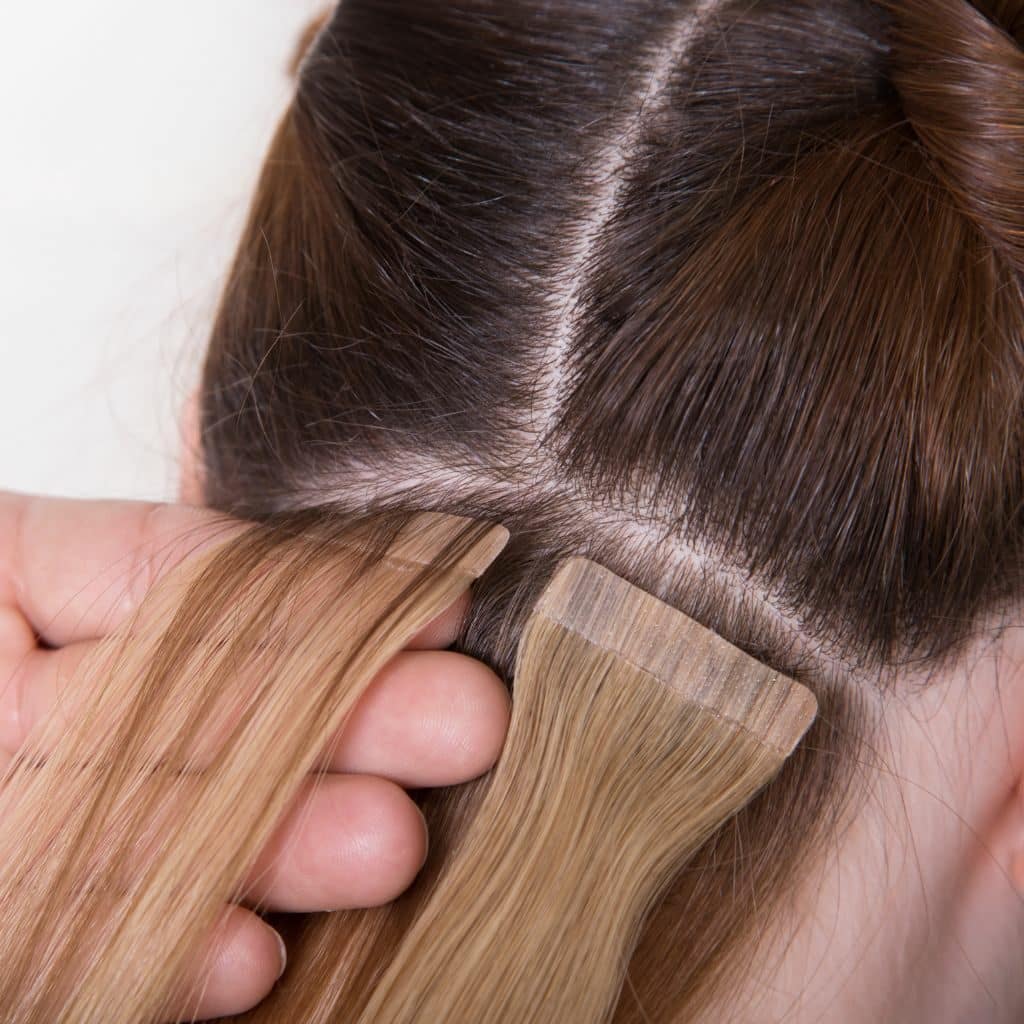
They are easy to install, instant, cheap, and their connections can grow together with natural hair.
Typically the hairstylist will made two strands sandwich the wearer’s natural hair in between, gives people the impression that three strands of hair are undoubtedly heavy, and pulling against the scalp and causing damage to the wearer’s natural hair.
If you are worried about the weight of normal tape-ins, consider using mini tape-in hair extensions.
Compared to traditional tape-ins, mini tape-in hair extensions are much smaller and discrete.
The tape on each strand is folded in thirds and can either wrap around each strand or cut into smaller pieces for even lighter bonds.
I-Tip Keratin Bond Hair Extensions
I-Tip Keratin Fusion Hair Extensions comes in micro bonds, so they are very lightweight and cause minimal tugs to the natural hair.
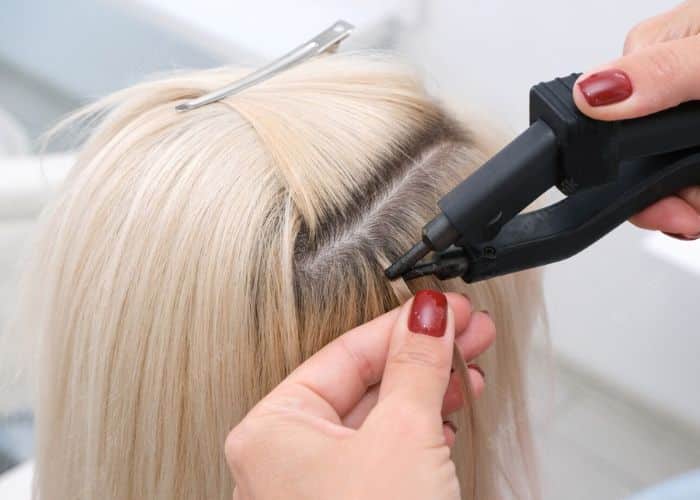
They are typically strand-by-strand hair extensions with pretty light bonds and can be installed through either cold or hot fusion.
There’s a conventional wrong belief that fusions can damage hair.
Actually, the bonds is made of keratin, an ingredients exists in human hair.
However, always get it performed by a qualified hairstylists, DIY it at home can lead damage to the natural hair.
-
OMBRE I-TIP Hair Extensions in Premium Remy Human Hair Wholesale T#6/613$82.00 – $224.00
-
I-TIP Keratin Bond Hair Extensions in Premium Remy Human Hair Wholesale$27.00 – $152.50Rated 5.00 out of 5 based on 2 customer ratings
Most fusion hair extensions at New Times Hair have differently shaped tips for the convenience of fusing them to the natural hair strands or clipping the beads to bond the natural hair and the extensions.
Click to browse our full list of keratin fusion hair extensions.
Conclusion
When buying hair extensions, we should never forget to choose the ones least damaging to our natural hair.
The overall guideline is to choose temporary hair extensions over permanent ones, strand-by-strand over wefts, and micro bonds over large bonds.
However, with the progress of hair extension manufacturing technologies, all hair extension methods are designed to be light, causing minimal harm to the natural hair and preferably remaining intact with the toss and turn.
Look again at the world’s top-quality hair extensions, made of 100% Remy human hair from single donors, lasting 1-2 years with proper care, and mixed seamlessly with natural hair.
